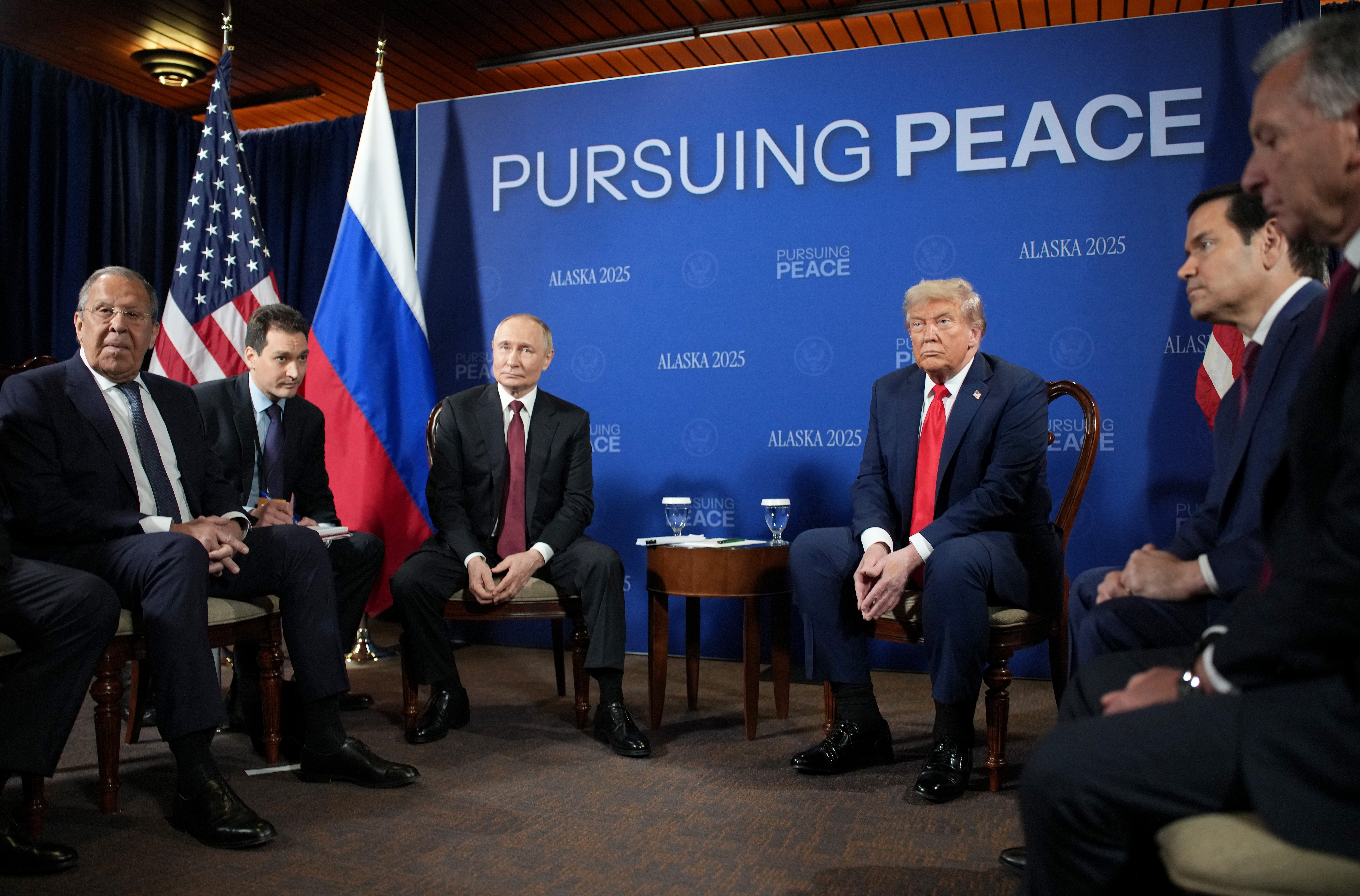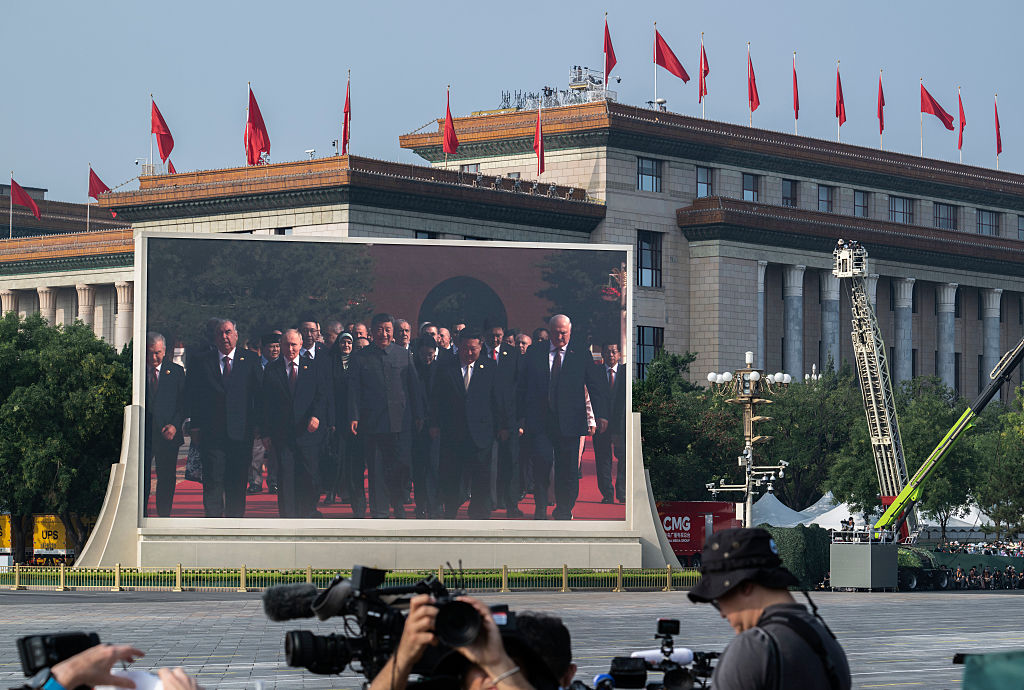Sufis and Salafists Temporarily Unite in Dagestan
Sufis and Salafists Temporarily Unite in Dagestan
The recent signing of a resolution after a meeting of the Muslim Spiritual Board of Dagestan on the one side, and the Salafi-backed Association of Akhlu Sunna on the other on April 29, appeared on the surface to herald a sensational victory for the Salafis and Sufi brotherhoods in the North Caucasus republic (www.kavkaz-uzel.ru, May 8). Both sides appeared to have reached an agreement and suspend their mutual mud slinging and animosity toward the other. While similar meetings of this kind have been taking place in Dagestan for over a decade this one did not end in the usual brawls as in the past. As depicted in Youtube these meetings often have ended up in brawls, with each side claiming victory over the opposite side (www.youtube.com/watch?v=e7aQcaQ8Ruo). Neither the Sufis or the Salafists hold any particular high moral ground as both groups fiercely accuse each other of all kinds of sins. However, based upon the results of the meeting this meeting indicated some level of agreement. Of the 9 points of the resolution describing the meeting on the website Kavkaz-uzel.ru, several created a level of compromise. For example, point 5 demands that that the two sides abstain from insulting past and present Islamic scholars, and this mostly refers to the previous and actual Sufi sheikhs. Point 6 sounds peculiar as it prohibits differential whistleblowing among people belonging to different Islamic teachings. This premise is a win for the Salafis. Point 7 proposes the establishment of a common board of the Salafis and the Sufis with equal representation of each side. Finally, point 9 calls on the authorities to reject the idea of abstention from sending people to study in foreign Islamic centers. Currently, there are several thousand Dagestani students studying abroad in such places as Medina in Saudi Arabia, Karachi in Pakistan and even Kosovo (www.kavkaz-uzel.ru, May 8).
When analyzing the outcome of the meeting of Salafis and Sufis, one needs to consider who participated in the talks on behalf of the Salafis to understand the complexity and evolution of Islamic political affairs occurring in today’s Dagestan. In the way of background, the Salafi movement was formed in Dagestan at the end of 1980s when it was formed into a political party known as the Islamic Party of Revival. The primary ideologue of Salafism in the republic, Bagautdin Kizilyurtovski (Kebedov) emerged as the de-facto spiritual leader of the movement. Kebedov was an interesting character. Against the backdrop of the victory of Chechen forces over the Russian military in the first military campaign of 1994-1996, Bagautdin Kebedov reached the conclusion about the possibility and necessity to wage jihad against the Russian Federation (www.kavkaz-uzel.ru, March 20). By the end of the 1990s, Kebedov had completely removed the border between political and military wings of the jamaat, uniting them for jihad against the Russian Federation (www.kavkaz-uzel.ru/articles/203107/?print=true). Hence, the leader of the Dagestani Salafis was so assured that he could establish himself as a ruler of part of Dagestan and start conquering Russian territories that he proclaimed himself the spiritual and political leader of the Islamic Republic of Dagestan.
In 1999, Dagestani jamaat forces under Kebedov’s command invaded the mountainous area of Botlikh on the border with Chechnya (www.chechen.org/index.php?newsid=336). The subsequent defeat of the Salafis in Dagestan in the summer and fall of 1999 resulted in Kebedov’s relocation to neighboring Turkey, where he has resided ever since. Following this development the Salafis’ positions were further undermined by the introduction of a law that expressly banned this teaching in the republic. The law was passed by the local authorities on September 16, 1999 (Islam News, December 17, 2010).
With this development it seemed that the Chechen war had put an end to the possibility of Salafism gaining ground in Dagestan. However, the rising activities of the militants forced the local authorities to reconsider the old idea of creating and controlling the political wing of Salafism in Dagestan. Since 2010 this outcome has been increasingly discussed as discussion arose about the idea of abandoning the law banning Wahhabism (aka Salafism) (Badnews.orgs). Toward this goal a special commission was formed to foster the role of reintegrating former rebels back into civilian life. The commission resembled the same set of policies that Russia had adopted in Chechnya, but with a major difference. In the case of Dagestan, the commission was led by Abbas Kebedov, the brother of the above mentioned Salafist leader Bagautdin Kebedov. Thus, by appointing the person who was least expected to be criticized for possibly betraying the Salafist side, the authorities in Dagestan actually tried by doing this to insulate themselves from this criticism. Ironically, in 2005 Abbas Kebedov was sentenced to a one-year prison term for the illegal possession of arms. Kebedov later appealed against the court’s decision and was allowed to leave the country. He was forced to return to Dagestan in 2007 because of pressure from the Russian government and was subsequently appointed as the head of the adaptation commission to reintegrate former rebels, a move that was certainly political.
Being a member of the Dagestani movement of Salafis (known as Ahle Sunna Va Jamaa) while simultaneously serving as a member of the government commission certainly casts doubts on Kebedov’s Salafist credentials. The commission on adaptation while being under government control also included several leading Salafis. What is interesting about this development and why it deserves explanation is that authorities in Dagestan for the first time approached the problem by attempting to isolate the political component of jihadism by creating a political wing as an outlet for jihad, something in the West that would appear to resemble Sinn Fein, the Irish political arm of the Irish Republican Army (IRA). The key question now is how the rebel fighters in Dagestan will receive the news about the brother of their spiritual leader collaborating with the authorities while representing them at the same time. Judging by a posting on the Kavkazcenter website, the reaction of the rebels so far has been mostly negative as the government plan now appears to have backfired (Kavkaz Center, November 27, 2011).
According to a posting on their website, the Association Ahlu Sunna has decided to get rid of Kebedov and officially announced that he is no longer representing their organization (Ahlu.org). Furthermore, the rebels accused Kebedov of close collaborating with the authorities and accused him of renouncing the primary postulate of the rebels – Jihad. Thus, in the course of 2-3 years Kebedov has managed to transition himself from being a fellow Salafi to an enemy of the group he used to head. Going one step further, the Salafis have now proclaimed him to be a false scholar (because he incorrectly claims that he studied at al-Azhar University in Egypt), and an enemy of his own brother Bagautdin who continues to insist on the idea of waging jihad. So the government’s gamble on Kebedov ultimately failed, but the project itself still remains alive and relevant to the plans of local authorities.
With Kebedov’s departure from the Salafist scene, the remaining members of the organization he headed may still legally engage in their social activities, but perhaps only for the time being. However, the current leader of the association, the young scholar and theologian Kamil Sultanahmedov is quickly becoming a rising star among the Salafis. Sultanahmedov is highly respected among Dagestan’s youth where much of his popularity and authority is based upon his criticism of Sufi rituals, as well as his explanation of the Salafi ideas in a calm fashion. At the same time Sultanahmedov has avoided making any direct calls for jihad, which if he did might be immediately cut short by the Russian security services.
In light of the issues outlined above, the Dagestani experience in creating a political wing of the military resistance may be the first successful project of regional authorities in the North Caucasus, although the militants are more likely to benefit from this than the government. On the one hand, the authorities in Dagestan need an instrument for diminishing the attraction of the ideas of global jihad by attracting persons to its side who are trusted by the radical youth. On the other hand, the rebels also need people who would voice their demands and make them known to the government, apart from the means of Internet. In the near future we can certainly expect the political wing of the militants to take an even more proactive stance than we have seen so far before because the government’s options in dealing with the ever-widening insurgency in Dagestan continue to shrink by the day.


